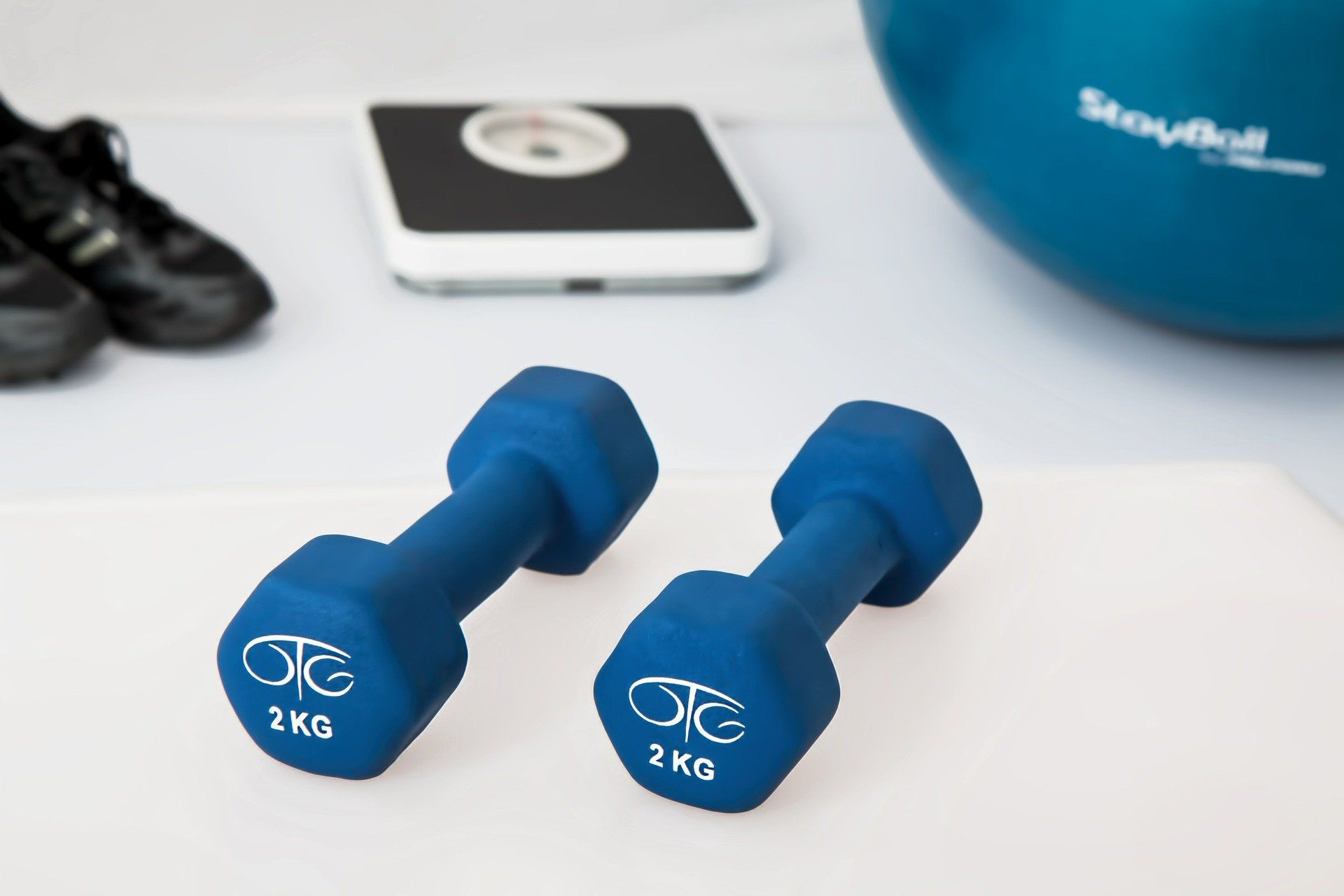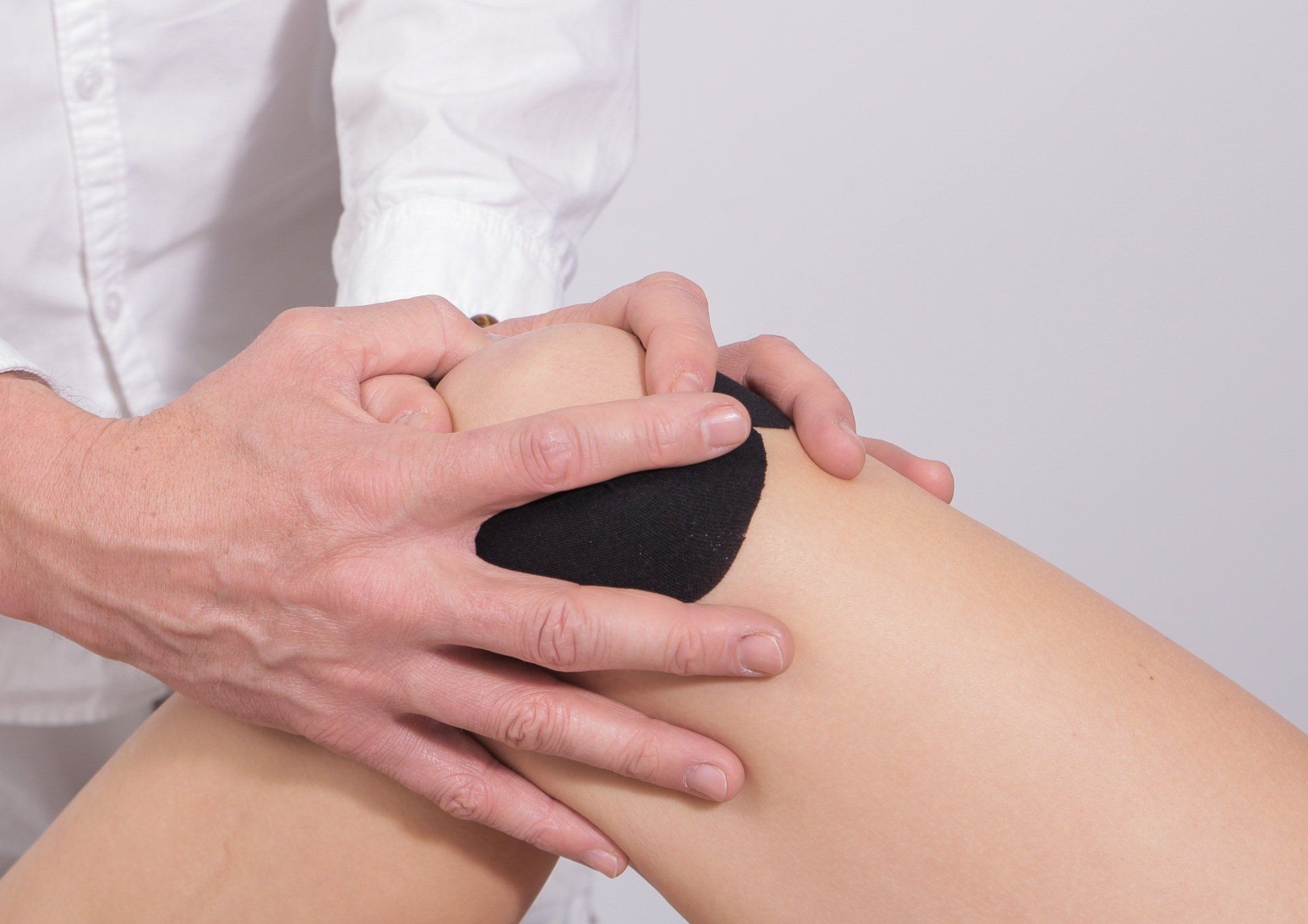NEWS
Our
News
Advice, recommendations, information

By Kathleen McCosker (Accredited Exercise Physiologist, Diabetes Educator)
•
26 Nov, 2021
Managing your diabetes is certainly an important aspect of maintaining your health and quality of life, but your goals and interests are very important too. Exercise Physiologists are specially trained in prescribing exercise to achieve your goals and manage your health while considering all aspects of your life, come and visit one of our Exercise Physiologists to discuss the best exercise for you, your life, your goals, and your diabetes. What is Type 2 Diabetes? Type 2 Diabetes is the result of increased insulin resistance and beta-cell impairment. Your pancreas has cells, named beta-cells, that produce insulin which helps your body use and store glucose, the sugar your body gains from the carbohydrates you eat. When you eat carbohydrates, your pancreas makes and releases insulin, which helps your body use and store the glucose (usually known as ‘sugars’) that are contained in carbohydrate foods. This insulin helps your body use the glucose as energy for your brain and muscles, or store the glucose in your muscles and liver to be used later. Without insulin the glucose stays stuck in your blood, which raises blood glucose levels and reduces the amount of glucose your brain and muscles have available to use as energy. In Type 2 diabetes, two areas of this process are impacted. 1. Beta-cell death: The cells in your pancreas that make insulin are overworked and some cells can die. Usually due to years of working too hard to create enough insulin to keep up with high carbohydrate and sugar intake and/or because they were a bit weaker to begin with and became more easily overworked than usual (due to family history and genetics). 2. Insulin resistance: Your body needs more insulin than usual to get the glucose out of your blood and into cells where it can be used as energy or stored for later. This puts stress on your body to produce more insulin than it usually would and often leads to further beta-cell death. These two processes cause ongoing problems, because as your insulin resistance gets worse and you need more insulin to do the same job, your cells get more and more overworked trying to keep up with your bodies demand. How does exercise help? As you exercise your heart rate increases and pumps your blood around your body more rapidly, this increase in blood flow helps deliver the glucose in your blood to your muscles, so it is pulled out of your blood more quickly than usual. Within your muscle cells there are transporters that move the glucose from your blood into your muscle cells to be used, some of these cells are powered by insulin, but some of these transports are powered by exercise. So, as you exercise, your cells have access to both the insulin and exercise transporters to get the glucose out of your blood and into your muscles, enabling much more glucose than usual to be moved out of the blood. Once you have moved your body and muscles, your muscles need to replenish their energy supplies again. To do this, a large amount of glucose is taken out of your blood and stored in your muscles, ready for the next time exercise is completed, taking this glucose out of your blood reduces your blood glucose levels. Replenishing the glucose stores in your muscles is also beneficial for preventing weight gain because if more glucose is stored in your muscles, less if left over to be stored as body fat in your adipose tissue. As your exercise more regularly and get fitter your body becomes more efficient at storing glucose and can store much more in your muscles than previously. However, this does not increase forever, and you must continue physical activity regularly to maintain your improved ability. What type of exercise is best? To choose the best exercise for you it is important to consider all the other aspects of your life and health, because you are much more than just your diabetes diagnosis. Exercise should be focused on improving your health and wellbeing, making you feel stronger, increasing your independence and ensuring you can continue to complete all the activities you enjoy throughout your lifespan

By Better Movement Clinic Podiatrist
•
09 Nov, 2021
In-toeing or pigeon-toed is a very common walking pattern in young children. As they walk their toes turn inwards ‘like a pigeon’. This type of walking is commonly seen in children between the ages of 2 years old and 7 years old. A lot of the time, in-toeing at these ages isn’t cause for concern as it can be a very normal part of your child’s development. However, this isn’t always the case. If your child is in-toeing and you notice the following: Excess tripping and/or clumsiness Fatigues very quickly Wants to be carried all the time Can’t keep up with other children their age Wears through footwear very quickly Is over the age of 7 Is excessively in-toeing and it doesn’t just look quite right We do recommend that you see a health professional. Our podiatrist can assist you with any of the above concerns you may have or if you just want to get a check up on your child’s feet, we are here to help. Contact the Toowoomba clinic today on 4632 7024 or 4662 2855 for our Dalby clinic.

By Danielle David - Physiotherapist
•
27 Oct, 2021
Your menisci (plural for meniscus) are pieces of cartilage found in your knee joint. They are very important for shock absorption, therefore very important for sporting activities, like running, netball, volleyball, etc. In fact, meniscal injuries account for around 15% of all sports injuries. However, meniscal injuries can occur with minor trauma (like standing up in a funny way), especially in people over the age of 55. Meniscal tears also can happen with other injuries with a similar mechanism, e.g. if someone injures their ACL (anterior cruciate ligament) or MCL (medial collateral ligament), they have often injured their meniscus as well. Common Symptoms • Tenderness on the inner or outer knee • Pain with standing and squatting • Knee “locks” or “clicks” or “pops” • Increased time spent in an extreme bent position How does it heal? The central part of the meniscus is avascular, meaning that the blood vessels mainly the supply the outside a lot better. This means that tears on the outer portions of the meniscus are more likely to heal, and tears in the central portion may not repair fully or may take a longer time. Treatment Treatment depends on the extent and location of the tear. Some people can get away with conservative treatment (e.g. RICE, Physiotherapy, etc.), and some people may require surgery. Whether you go down the conservative or surgical route, Physiotherapy is vital as part of your recovery. Your Physiotherapist will work with you to improve your range of motion, strength, balance and agility, using different treatment options based on your individualised assessment and goals. We will be with you every step of the way, from the time you injure your meniscus until we get you back to doing what you love. References: 1. ID McDermott, SD Masouros, AMJ Bull, and AA Amis. The Meniscus, 2010; 91(9.6), 11. 2. Knieslijtage, http://www.knie-slijtage.nl/knie-aandoeningen/meniscus/wat-is-een-meniscusscheur, geraadpleegd on 26 November 2011 3. Hede, A., Jens|n, D. B., Blyme, P., & Sonne-Holm, S. (1990). Epidemiology of meniscal lesions in the knee: 1,215 open operations in Copenhagen 1982-84.Acta orthopaedica Scandinavica. 1990; 61(5): 435-437. 4. Deyle GD, Henderson NE, Matekel RL, Ryder MG, Garber MB, Allison SC. Effectiveness of manual physical therapy and exercise in osteoarthritis of the knee. A randomized, controlled trial. Ann Intern Med. 2000; 132:173–181

By Hannah Rogers - Accredited Practising Dietitian
•
15 Oct, 2021
Did you know? It is a myth that people who follow a plant-based diet are unable to consume enough protein. As long as you choose dairy alternatives, nuts, legumes, soy products and grains, you will meet your protein requirements if you are otherwise healthy. World Vegan Day is the perfect day to break down what a plant-based diet is, how to meet your nutrition needs and how someone who still eats animal products can include more plant-based meals into their diet. We acknowledge that a plant-based diet is not for everyone, however as Dietitians we have seen an increase in people choosing this diet and it's important to make sure it is meeting your nutritional needs. There are several types of plant-based diets: Flexitarian: people who choose to eat vegetarian most of the time, but eat meat or seafood occasionally. Pescatarian: people who only eat fish, dairy and eggs in terms of animal products, but no red meat or chicken. Vegetarian: people who only eat eggs and dairy in terms of animal products. There are people who choose to just eat dairy or eggs as well. Vegan: people who only eat plant-based products – so no dairy, eggs, meat or seafood. Many vegans also choose cruelty free products, such as shampoo, make up, clothing etc. Benefits of plant-based diets: High fibre diet, with research suggesting this reduces bowel cancer risk and supports gut health due to the diversity of plants in the diet Less saturated fat in most plant-based protein sources, so reduces heart disease risk Reduced risk of high blood pressure What nutrients do I need to be more mindful of on a plant-based diet? Iron: This nutrient helps transport oxygen around our body via blood. The most well-absorbed form of iron in higher amounts is in red meat, chicken and fish. If someone is vegetarian or vegan they can struggle to meet their daily iron needs, especially if they have a menstrual cycle or are an athlete. Plant-based choices include tofu, legumes, dark green vegetables, and fortified cereals and meat alternatives (Vegie Delights). Zinc: This nutrient helps support our immune system cells to fight off infections. Zinc is found in high amounts in animal products. Plant-based choices include nuts, beans, and fortified cereals and meat alternatives (Vegie Delights). Vitamin B12: Brain health, blood cells and our nervous system use vitamin B12 to function correctly. Vitamin B12 is found in animal products and in fortified products. Generally speaking, only vegans will struggle to meet their daily requirement of vitamin B12, so should discuss supplement options with their GP. In addition, some meat alternatives and nutritional yeast contain vitamin B12. Omega 3: This nutrient helps out brain, heart and immune system function optimally. The richest source of omega 3 is from seafood, however plant-based choices include walnuts, hemp seeds, flaxseeds, chia seeds and some oils (canola, soy bean, flaxseed). Calcium: Bone health and muscle contraction (including our heart beating) are the main two roles for calcium. The richest source of this nutrient is cow’s milk dairy products, however there are plenty of plant-based options that include calcium-fortified milks (Vitasoy or So Good), chia seeds, tahini, almonds, dark green vegetables, calcium-set tofu and chickpeas. If you would like individualised advice from one of our Accredited Practising Dietitians, please book via phone call or online today.

By Dylan Tapp - Accredited Practising Dietitian
•
15 Oct, 2021
Type 1 diabetes (T1DM) is an autoimmune condition where the immune system destroys the cells of the pancreas that make insulin. Without insulin the body is not able to clear sugar from the blood, and so prior to the discovery of injectable insulin type I diabetes was almost always fatal. Thankfully, we now have multiple types of injectable insulin which allows people living with Type I diabetes to live perfectly normal lives. There are even notable athletes like Brett Stewart and Steve Renouf who have managed their type I diabetes while forging successful NRL careers. People with Type I diabetes work with a range of health care professionals to develop an appropriate insulin regime, diet, and lifestyle to maintain their blood sugar within a normal range (typically 4-8mmol/l). The healthcare team usually includes: • GP • Endocrinologist • Diabetes Educator • Dietitian. What are the treatment goals with Type 1 Diabetes? One of the primary goals with T1DM management is to prevent hyperglycaemia (high blood sugar) and hypoglycaemia (low blood sugar) as each of these have their own risks. Hypoglycaemia typically results from excessive insulin, or inadequate carbohydrate intake. This can be a medical emergency as if it drops low enough it can result in coma, and even death. Hyperglycaemia typically isn’t a medical emergency unless it is for a long time or particularly high. However, over time even moderately high blood sugar can cause serious problems. This is largely because sugar is a comparatively large molecule in our body and so when in high concentrations it can cause damage to small blood vessels, like those in the eyes, feet and kidneys. Chronic hyperglycaemia can cause: • Kidney disease • increased risk of heart attack and stroke • limb amputations and blindness. • Nerve damage • Diabetic Ketoacidosis It can be a bit of a balancing act keeping blood sugar from being too high or too low and therefore it is important that people living with T1DM engage with a multi-disciplinary healthcare team. How can our Dietitians help? The foods that we eat are an important part of managing blood sugar levels in conjunction with an appropriate insulin regime. Accredited Practising Dietitians (APDs) work with clients with T1DM to: • Understand what foods contain carbohydrates • Understand how to count carbohydrates • Choose appropriate carbohydrates • Develop an individualised nutrition approach to best support long-term health Developing an appropriate nutrition plan with one of our dietitians is an essential part of managing T1DM, because of this Diabetes Australia recommends that everyone with T1DM sees and APD. Seeing an APD is key, because one diet does not fit all, particularly not those living with T1DM.

By Better Movement Clinic - Podiatrist
•
15 Sep, 2021
One of the most common things we see as a Podiatrist is children’s flat feet . There is a massive stigma around ‘ flat feet’ being ‘bad ’ but that is not always the case but how do you know if your child needs assessment? You may notice that young children have a very flat arch or have pancake feet. This is because your child’s foot is still developing and the bones in the foot are not all there yet. It is not until the age of 6 years old that all the bones will have appeared in the foot. However, if your child has flat feet and is complaining of pain or sore feet and/or legs then it is recommended that they see a Podiatrist. There are several different things that can cause your child to have flat feet. Some of the most common things we see is: - Weakness or overuse of the muscles that hold up the arch of the foot - Family History - Trauma - Structural Deformity that causes the bones to sit in a collapsed position - Neurological conditions such as Cerebral Palsy - Downs Syndrome These are just some of the reasons that can cause flat feet. If your child is above the age of 6 and still has flat feet and they may not have complained of pain yet an assessment by a Podiatrist is still recommended as it can help reduce any risks of pain in the future. Treatment options for flat feet include: - Footwear - Arch Supports - Patient-Matched Orthotics - Strengthening Exercises - Stretching If this is something you would like our Podiatrists to help with book online or give your local Better Movement Clinic a call.

By Hannah Rogers
•
06 Sep, 2021
*Trigger warning: mention of eating disorders* PCOS is a very common hormonal condition that affects 1 in 10 women. Whilst women are usually diagnosed in child-bearing years, this condition can impact women after menopause as well. Currently, there is no cure but it can be managed through lifestyle changes. How would I be diagnosed with PCOS? You must meet any two of the following and be diagnosed by a doctor: 1. Irregular menstrual cycles (less than 21 days apart or over 35 days apart or no cycle). 2. Excess male hormone production, such as testosterone, shown through a blood test. 3. Cysts on the ovaries, as seen on an ultrasound. When should I consider being tested for PCOS? Your individual health status should be discussed with your GP, however women can experience any number of the following symptoms (or none at all): excess hair growth, hair loss, skin changes (acne), weight gain, insulin resistance, depression, anxiety, sleep apnoea and fertility issues. It is important to seek advice from your GP if you experience any of the above symptoms due to the increased risk of type 2 diabetes, cardiovascular disease and endometrial cancer. Why should I consider thinking about my diet? Insulin Resistance, Most women with PCOS experience insulin resistance, regardless of body size. However, typically those in a smaller body are less likely to have insulin resistance. Insulin resistance is when your body struggles to let glucose (sugar) to enter your body cells for normal energy production, and so the sugar stays in your blood stream, increasing your blood sugar levels. Diet and exercise can help improve insulin resistance. Weight Loss, Majority of women with PCOS are living in a bigger body, hence are often told to lose weight to be at a healthy body mass index (BMI). What is important to remember here is that PCOS is thought to lower your metabolism, and can make it more difficult to lose weight. Insulin resistance can also play a part in weight gain. It is important to focus on healthful behaviours, rather than weight loss. Disordered Eating/Eating Disorders, In a world where diet culture is huge and women are expected to look a certain way, a focus on calorie deficits, fad diets and being slim can result in “disordered eating” (a pre-eating disorder stage). Often we lose sight that food is for nourishing our body with vitamins, minerals, protein, carbohydrates, fats and fibre. Eating well is so important for our physical and mental health, beyond body size. Good nutrition supports improved insulin resistance, heart health, mental health, fertility, bone health, strong muscles, strong immune system and more. There are many studies that link PCOS and eating disorders due to the focus on body size. What do I eat then? The basic principles are: 1. Eat mostly whole foods with limited processed foods. • Eat 2 serves of fruit and ½ plate of vegetables/salad at lunch and dinner – these are rich in antioxidants and fibre. • Do not restrict processed/fun/”junk” foods as this often leads to eating large amounts of these foods when we ignore our cravings and negatively affects our mental health (after all we are all human). 2. Eat low glycemic index (GI) carbohydrates. • Low GI carbohydrates do not increase our blood sugar levels as drastically and are high fibre, which feeds our gut to keep us regular (which can be difficult when on your period). 3. Eat unsaturated fats and limit saturated fats. • Unsaturated fats are found in fish, nuts, avocado and olive oil, that supports our heart health. 4. Eat regular main meals, snacks when hungry and listen to hunger cues. • Regular breakfast, lunch and dinner provides our body a regular dose of nutrients for optimal physical and mental health. • Eat till you feel full, not beyond and do not ignore true hunger. 5. Focus on what food provides for our bodies, rather than fitting a “body mould”. • Remember that every body is different and we do not all fit the same body shape mould. If you are a taller woman, it is more likely you are going to weigh more than a shorter woman. Some women are also curvier than others. And remember, women are supposed to have more fat stores than men, which is to support us with optimal ovulation (we need a certain % of fat to ovulate) to help us fall pregnant when we choose to start a family. 6. Engage in joyful movement (seek advice from an Exercise Physiologist if you don’t know where to begin). • Exercise because you enjoy it, not for the sake of it. Try yoga, pilates, walks, gym classes, boot camps, dance in your living room… just move! " I heard that supplements are useful for PCOS, is this true?" Inositol appears to improve insulin resistance, aid in fertility and lower testosterone levels. The recommended amount is 2-4g per day of myo-inositol (yes there are different types of inositol!). Please discuss options with your GP or a dietitian. Cinnamon is another option that may help with improving regularity of your menstrual cycle and may improve blood glucose control. The recommended amount is 1-2g per day – just add a teaspoon to your morning porridge, and even if it doesn’t improve your symptoms, it still tastes pretty good. Magnesium, zinc and omega 3 fats are also beneficial for PCOS, but also general health. If you eat a balanced diet of fruit, vegetables, meats or alternatives, seafood, nuts and seeds, and dairy, you are likely to meet your recommended daily intake of these nutrients and do not need to supplement. Vitamin D is also important, so enjoy some time in the sun, about 5mins a day in Queensland. Use sun protection if longer than this. If you feel you would like more individualised advice, book today with one of our Dietitians about your diet and an Exercise Physiologist about movement. Please also visit your GP if you experience any of the symptoms listed in this blog article. If you feel that you may be restricting your eating in a negative way, please consult your GP, Dietitian and/or Psychologist. Contact the Butterfly Foundation Hotline if you need support now on 1800 33 4673.

By Jake Schladdt
•
31 Aug, 2021
I am sure that at once stage you have had the odd “ niggle ” or “ twinge ” in the shoulder. But have you noticed this “ niggle ” stick around a little too long or mainly around when doing certain odd jobs around the house? Shoulders are designed to have more flexibility than most joints to allow up to do many of the activities we like to do throughout the day whether that being cleaning, working, or sports. However, overtime if not treated with appropriate care or support can lead to a “ niggle ” that sticks around for a little too long. What is the Common Presentation for Shoulder Pain? [1,2,3] • Swelling, tender, painful when directly touched over shoulder • Pain when lying on side of shoulder • Pain when lifting arm • Difficulties with overhead activities • Difficulties reaching behind back • Limited range of shoulder in all directions due to pain • Gradual onset of limited range or pain How Does Physiotherapy Help Manage Shoulder Pain? • Performing thorough movement and strength examination of the upper body, alongside providing education and understanding of the condition/injury. • Correcting incorrect biomechanics of the shoulder with strategies and modifications (taping, bracing, ergonomics) • Performing manual therapy techniques and treatments to help resolve any joint imbalances helping to improve range and overall shoulder function. • Creating an individualised exercise program tailored for resolving any muscle imbalances as a result from ongoing shoulder pain. • Providing education on pain management and self management strategies and techniques. If you have any questions regarding your shoulder pain, please give us a call. Here at Better Movement Clinic, we provide all clients with accurate diagnosis of what is happening, and treatments tailored individually to help return to previous level of function and get back in action as soon as possible. We are conveniently located behind the Blood Bank on Ruthven Street in Toowoomba and have a second clinic out in Dalby in the Myall Center. Also travel around in our mobile clinic every three weeks servicing the Miles and Tara communities. References 1. Bonafede, R., & Bennett, R. (1987). Shoulder pain. Postgraduate Medicine, 82(1), 185-193. doi: 10.1080/00325481.1987.11699906 2. Greenberg, D. (2014). Evaluation and Treatment of Shoulder Pain. Medical Clinics Of North America, 98(3), 487-504. doi: 10.1016/j.mcna.2014.01.016 3. Mitchell, C., Adebajo, A., Hay, E., & Carr, A. (2005). Shoulder pain: diagnosis and management in primary care. BMJ, 331(7525), 1124-1128. doi: 10.1136/bmj.331.7525.1124


